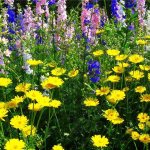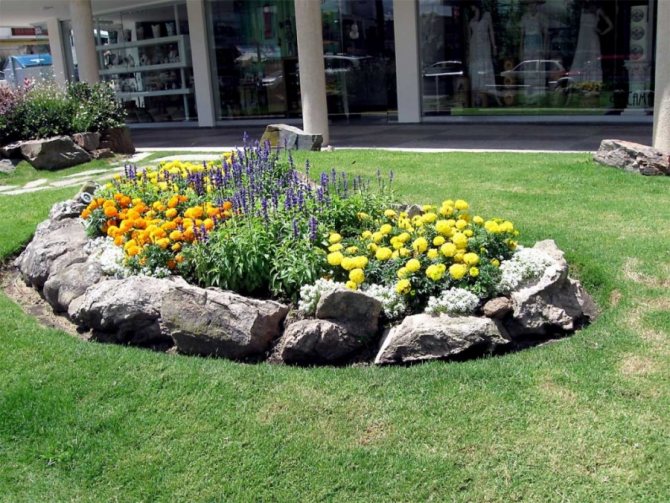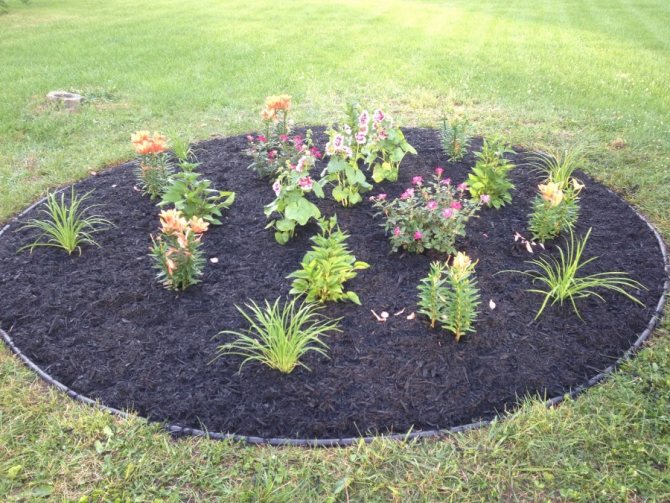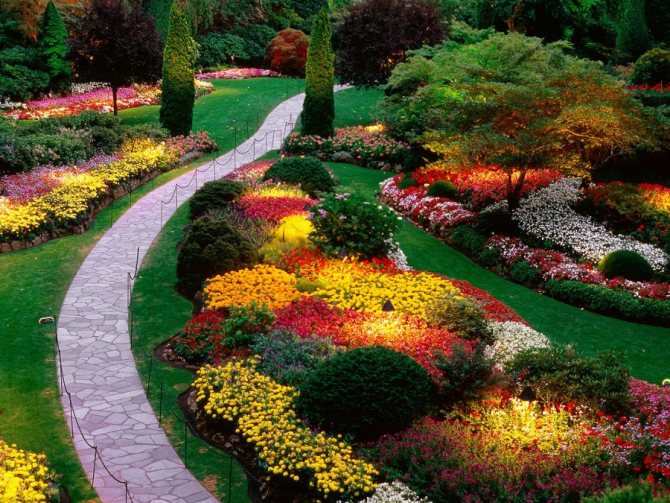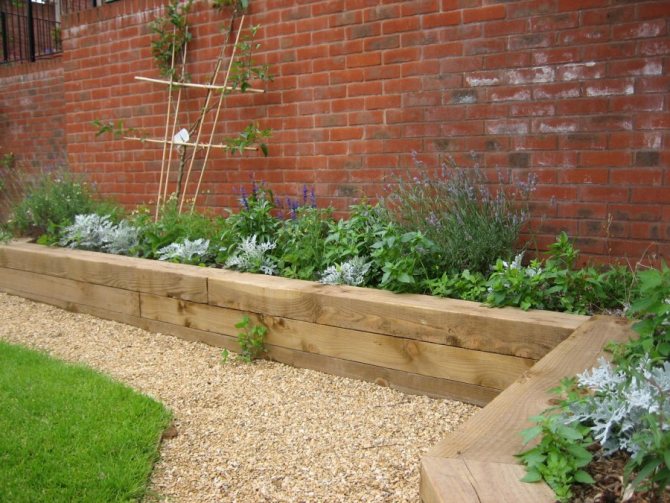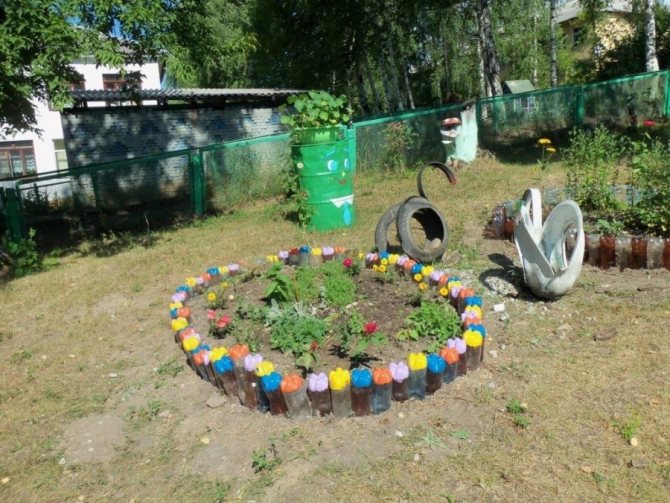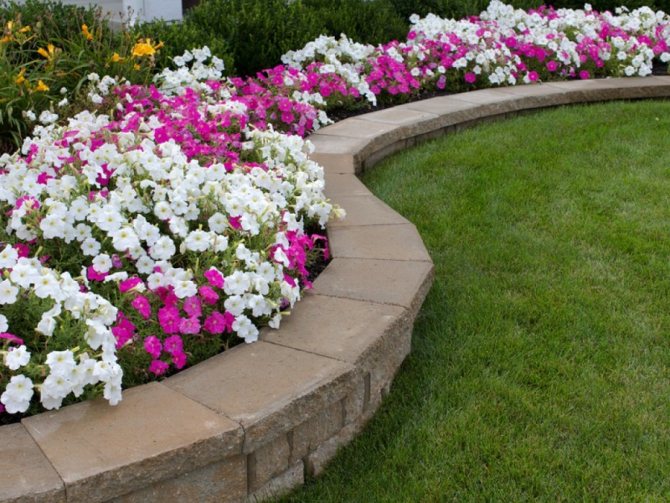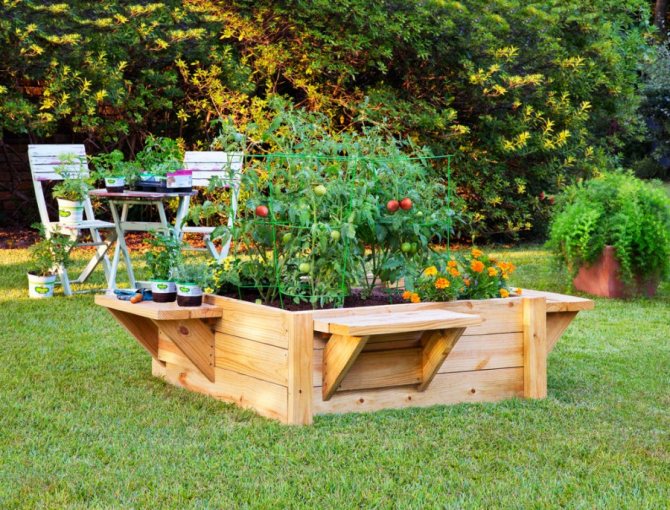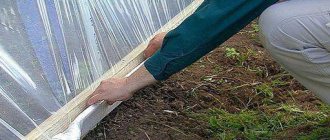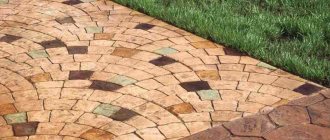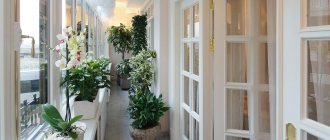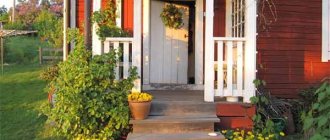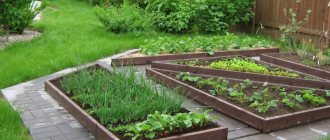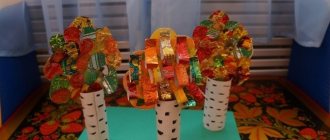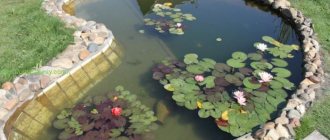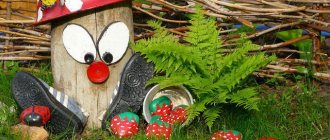The most important decoration of any landscape design, be it a country house or a small summer cottage, are flower beds. Of course, it will not be difficult to call a landscape designer today, and the cost of his services has not been transcendental for a long time. But still, many people prefer to decorate their land on their own, using both special decorative elements and improvised means. At the same time, many photos of flower beds made from scrap materials with their own hands prove that such a design is no worse than those that professionals can offer.
Annual flowers for a simple flower bed
First of all, when organizing a simple flower bed, you should pay attention to the fact that all ornamental plants have a variety of life forms. There are annual flowers that need to be sown again every year. There are biennials that bloom only in the second year of life. There are also perennial plants that bloom brighter and more luxuriant every year.
If for the device of a simple and beautiful flower bed you plant plants from seeds, then this year only annual plants will be able to bloom. Some of them start blooming only after 13 to 15 weeks. These types include late asters, tall marigolds, verbena, salvia, petunia, lobelia.
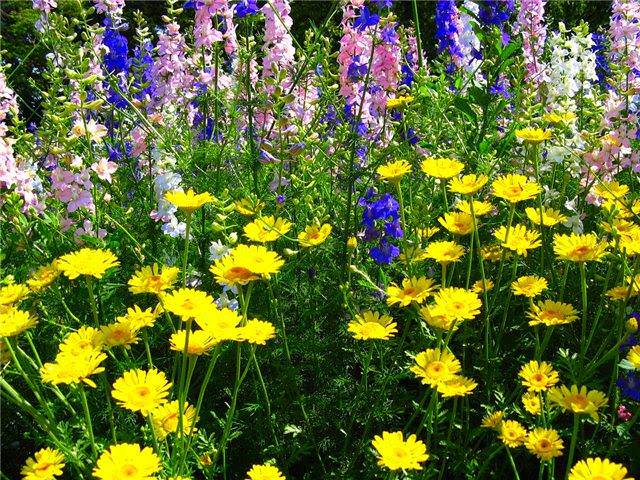
These flowers can only be grown through seedlings, while other annuals can be safely planted immediately in the ground.
For example:
- dahlias;
- marigold;
- matthiola;
- calendula;
- poppy;
- nastrution;
- Drummond's phlox
- eschsholzia;
- cornflower.
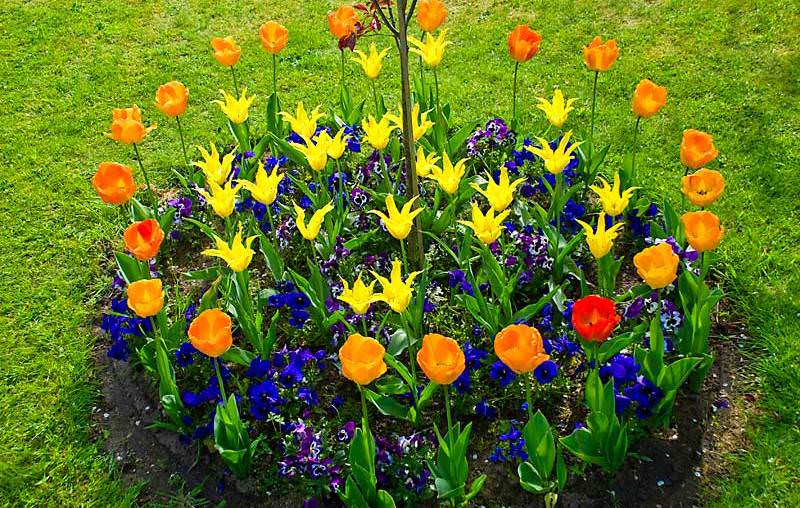

The above plants can be sown in early or mid-May, and you can see their beautiful bloom in July-August. The decorativeness of annual plants appears only in the second half of summer.
It is worth noting that growing flowers through seedlings significantly speeds up their flowering time. And planting ready-made sprouts in a flowerbed is somewhat more pleasant than expecting shoots.
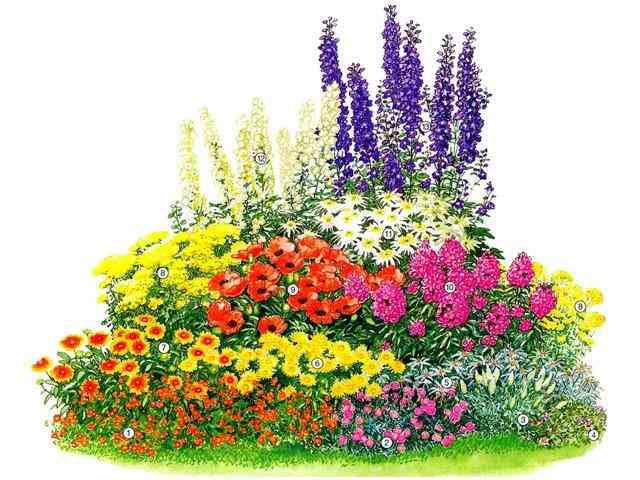

Self-creation of a flower bed of perennials
Having determined the type of planting and plants for it, before making a flower bed, it is imperative to prepare the soil for planting. In no case should this stage be skipped, since the beauty and duration of flowering of plants in a flower bed depends on the soil.
The choice of plants at the first stage is carried out not only according to the compatibility of appearance and shades, but also according to similar growing conditions. This will make it much easier to care for the flower bed.
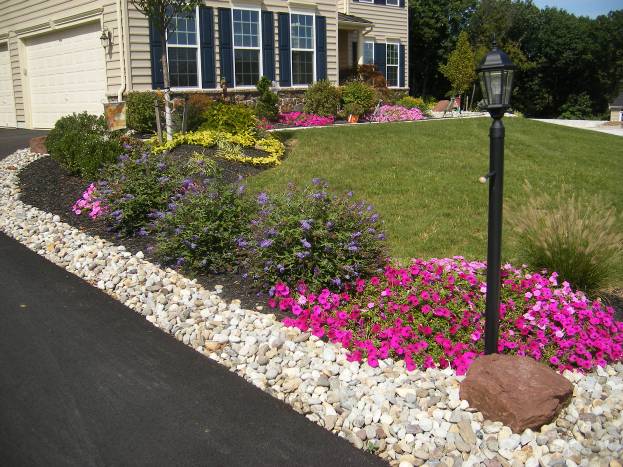

You need to start preparing the place by removing the old turf and clearing the site of stones, stumps, roots, unnecessary plants. It will also be important to remove insect pests and all kinds of parasites, if any. This is done with a shovel. It is important to remove all weeds from the roots so that they do not interfere with the further growth of plants.
Clay soil must be diluted with sand, bentonite or clay soil is added to light soil. After that, it is necessary to add compost and loosen the soil with a pitchfork, mixing everything introduced into it. For clay soil, it is also important to create a drainage layer, which is carried out by introducing crushed stone, sand, gravel and broken brick. The drainage height is usually about 15 cm.
For sandy soil, on the contrary, drainage is not needed, so the water does not stagnate. Here it is important to cover the bottom with humus, manure, organic fertilizers and clay composition. In height, such a layer is performed within 10 cm.
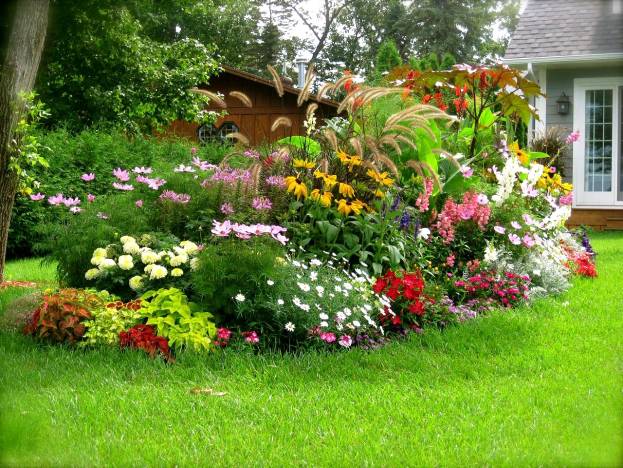

Important! Before planting plants, the acidity of the soil must be taken into account.
In order for the water not to linger, it is necessary to raise the soil for the composition 10 cm above ground level. This is necessary since many types of bulbous plants can die from excess moisture.
After that, you need to fertilize and plant seedlings. It is worth considering that 1 sq. meter of soil can be planted:
- 10 pieces of ground cover plants
- 7 pieces undersized
- 5 pieces of medium height plants
- Several tall plants


Creating a flower garden
To create a harmonious and beautiful flower garden, plants should be planted in groups: high are left for the background, low for the front.
There are two simplest ways to decorate a flower bed:
- White and pink range. For such a scheme, you can use pink, white lavender, pink cosme, placing them in groups in the background. Place white and pink zinnias closer to the center. In the foreground, Drummond's phlox and Godezia will look good. The edges of the flower garden can be edged with allisum for a more accurate design. Also, a cornflower will be a good highlight of such a flower garden.
- Annual flowers are red-orange. Scarlet amaranth with groups of decorative sunflowers will come into the background here. You can also add groups of yellow and red zinnias, annual dahlias. As long as the zinnias are growing, escholtia will look good between them. You can also add red and yellow asters, a little calendula, and undersized marigolds will be an excellent border for the edge of the flower bed.
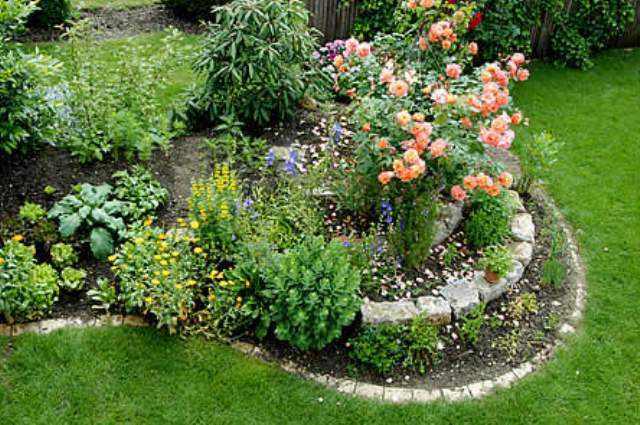

How to make a flower bed with your own hands from scrap materials
For a floral ensemble to please the eye and be aesthetically pleasing, you still have to work hard to create it. And the very first thing that should be taken care of before starting the design of flower beds in the country or a personal plot from improvised materials is the choice of their location. As a rule, these decorative elements are most appropriate along the path to the house, under windows, in front of or behind gates.
Attention! Often, using this element, they hide the flaws of the garden plot, such as the walls of a barn, an old fence or an unfinished foundation.
On the selected site, it is imperative to mark the size of the future flower garden in order to approximately know the possible costs of material.
After determining the location, you can proceed with the implementation.
Simple bottle guard
To make a fence for a flower bed with your own hands from bottles, you need to take:
- glass bottles of any volume (0.5 l can be used);
- garden shovel;
- sand or loose earth.
The process itself is quite simple and consists of the following steps:
- First, the bottles are rinsed and the labels removed.
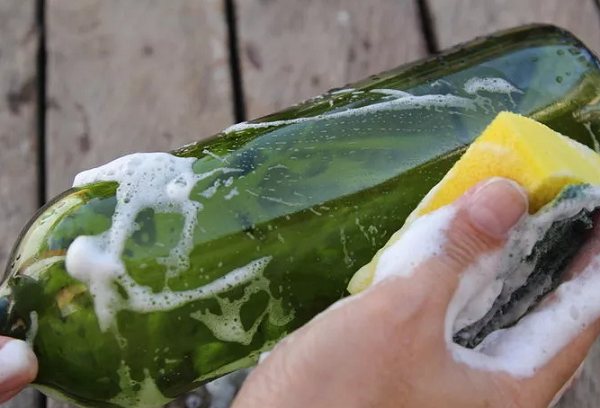

- After that, sand is poured into clean bottles.
- At the marked area along the edge, a trench is made with a depth just above the bottleneck.
- Then the bottles are placed in the trench one by one, with the neck down, and they are slightly pressed in in a circular motion. This is hardly done with all the bottles until the fence is completely installed.
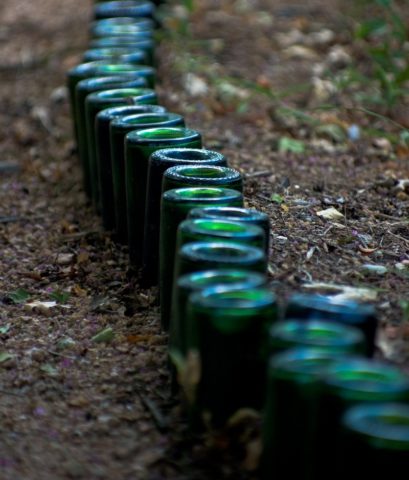

- The trench is covered with earth and rammed. The remains of the soil are swept from the surface of the bottles.


Advice! For such a design, flower beds are suitable not only glass, but also plastic bottles.
In addition, in this way you can make a very different drawing, it all depends on the imagination of the owner of the site. For example, it is possible to create an ordinary fence around the perimeter of the flower bed, or make a beautiful pattern.Quite often you can even see a butterfly or a flower.
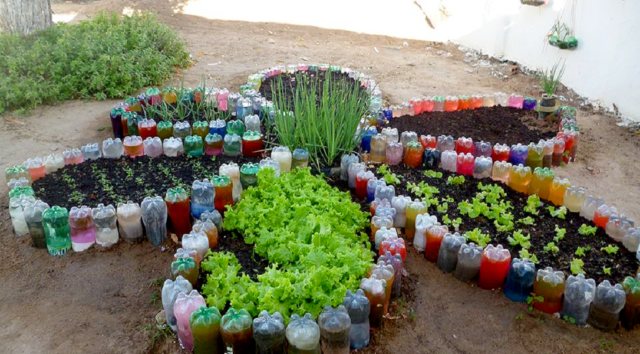

DIY tire flower bed
Also, without much effort and time, you can make such an unusual flower bed with your own hands from improvised materials, like a street vase from a tire.
This will require:
- old car tire;
- sharp knife;
- a piece of chalk.
A sketch is required on the side of the tire. Then, along the marked line, using a sharp knife, they begin to cut the rubber.
Advice! Since the thinnest layer is on the side of the tire closer to the center hole, you should start cutting from this place.
Cut at the outer corners, going almost to the start of the tread. Thus, the entire marked part is completely cut out.
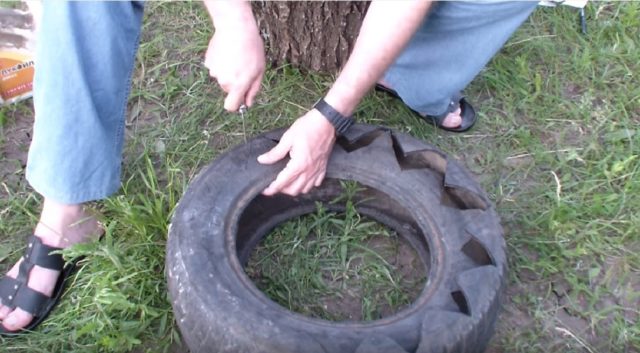

After completing the cutting of the marked part, the tire is turned over to the other side, and the side part is cut in a circle before the beginning of bending. Then cuts should be made in the same way in a circle of about 5-7 cm at a distance of 10-15 cm from each other.
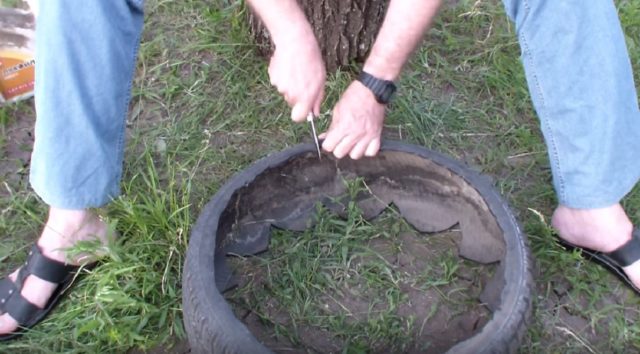

The final stage is the eversion of the tire. These cuts will make this easier.
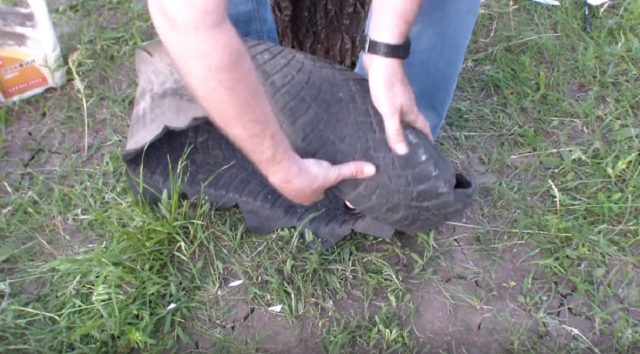

As soon as the tire is turned out, the flower bed is completely ready to be filled with soil for planting flowers. Additionally, it can be painted in the desired color for decorative appearance.
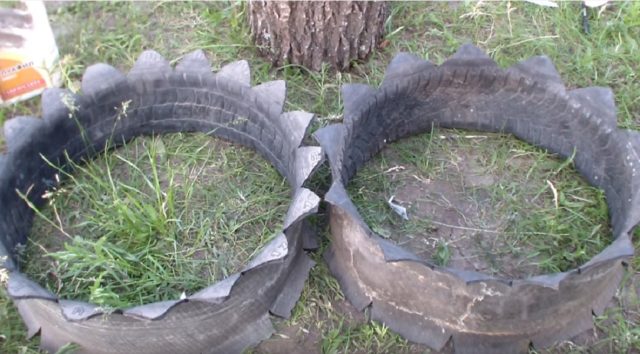

Flower bed layout
Before organizing a simple flower bed, you should carefully plan what and how to plant, in what order and color scheme. A couple of tips will come in handy for this.
- Absolutely all flowers move with their heads following the sun. And therefore, if the view opens to the flower bed from the north side, then most of the day the flowers will be turned away from you. It is recommended to plant flowers on such a bed that do not follow the sun so clearly. These include: marigolds, zinnias, irises, lupine, Buzulnik Rocket, delphinium.
- If the site for the flower bed is located along the fence, through which people passing by can admire your flowers, then make a choice in advance: the flower bed will have to delight you or passers-by.
- When sowing seeds, a sufficient distance should be left between the different groups of plants. Better at the end of June, the flowerbed will look a little empty, but in July you will not have to free some plants from others, more aggressive and spreading.
- When planning a flower bed, careful attention should always be paid to the height of the selected plants, which is usually indicated on the seed packaging. You also need to follow the recommendations for the distance between them. If the seedlings are too frequent, they can be carefully dug up and transplanted. However, some plants do not tolerate this procedure very well.
- If you decide to collect seeds from flowers that have a certain shade, then do not be lazy and mark the selected plant in advance, immediately after the beginning of flowering. Since the next weekend the flowers can bloom and get lost among the "comrades" painted in a different color scheme.
- For prolonged flowering of annuals and perennial flowers, it is necessary to remove from time to time already faded inflorescences, as well as fruits and ovaries. Thus, you can maintain the decorative effect of your flower bed.
- Do not sow seeds of the same species over too large an area. When the time of its flowering has passed, you can get a very unsightly, empty area, which can very well disrupt the holistic appearance of a simple flower bed.
- It should be noted an interesting property of some flowers, for example, escholzia, the buds of which close in cloudy weather. And the tricolor bindweed closes with the onset of the afternoon. But mattiola, on the other hand, opens up and begins to smell fragrant only in the evening and at night.
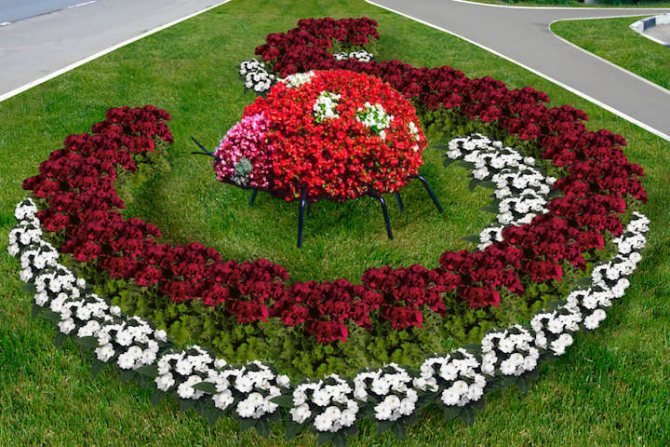

Why is she needed
Have you ever wondered why flower beds are needed in the country at all? It would seem that there is no special meaning in them, except for beauty and aesthetics.So I thought when I started writing, but it turns out that summer residents plant flower beds in order to attract beneficial insects to the site, which are needed for various stages of pollination, and insects also help fight garden pests.
Also, flower beds are used as a natural way to drain the land. There is another interesting way to plant a flower bed - in the form of a flower clock. Probably, many have seen a mechanical clock arranged on a beautiful flower bed, but a real flower clock is planted in such a way that it could be used to determine the time - without any mechanism!
Different plants open and close at different times, and you can tell the time from their condition. But more often than not, a flower bed is just a beautiful decorative element that helps to decorate the site or hide small imperfections in the landscape.
How to organize continuous flowering
The most decorative look can be obtained by achieving a harmonious combination of annuals and perennials. This combination will allow your flower bed to bloom almost continuously from the beginning of May until the onset of frost.
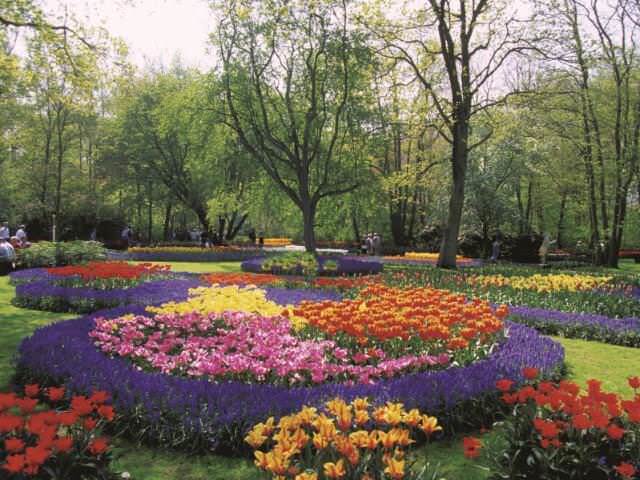

The use of perennial flowers has a number of distinct advantages. They only need to be grown and planted once every few years. Such plants do not require excessively careful care, but every year they please with more and more lush flowering. Perennials are easily grown from seeds that you can collect yourself, or can be purchased at your nearest store.
If you have planned to organize a flower bed of continuous flowering, then be sure to use bearded irises and lupines. Already in June, your flower garden will be enveloped in multi-colored lupine flowers and very beautiful iris flowers sparkling among the green foliage. Shade-tolerant and picky Turkish carnations, as well as red and bright lychnis, will pick up the flowering baton. Long blooming and powerful foxgloves and light, delicate butterflies of Escholzia will bloom almost simultaneously.
Varieties of flower beds and flower beds
Read also: A piece of Switzerland in the garden: a catalog of plants for an alpine slide (80+ Photos & Videos) + Reviews
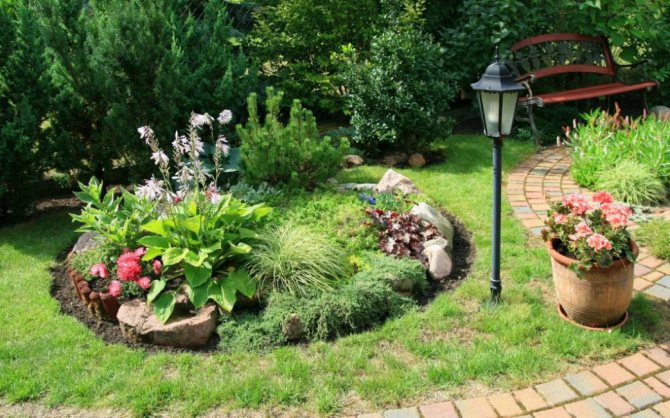

Alpine slide
In modern design, there are many options for planting ornamental plants. Classification of standard ornamental plantings:
- Traditional flower beds - are beds of various shapes: rectangular, square, round, etc. Flowers with different flowering periods are planted on it. So that some bloom, others bloom. This ensures flowering from spring to autumn.
- Chameleon - this flower garden is planted according to the traditional principle. In it, contrastingly colored flowers are selected to create a sharp transition.
- Irregular flower bed - is planted in such a sequence that during the summer some flowers are replaced by others.
- Regular flower bed - differs in the simultaneous flowering of all flowers. A variety of varieties and species of plants is permissible in it.
- Carpet flower garden - consists of ground cover plants. It takes a lot of patience. The result of painstaking work will be a living carpet with a unique pattern of flowers.
- Monoclumba - consist of flowers of one variety and one color.
- Vertical flower beds - consists of a variety of flowers, planted vertically. Used for decoration, walls, fences, arbors.
- Ring flower beds - used to decorate various objects: fountains, statues, fruit and ornamental bushes.
- Alpine slide Is a composition similar to a mountain. Perennial flowers are used, which are planted on a hill. You can use stones to create it.
- Border - used to decorate garden paths, lawns.
- Flowerpot Is a flower garden that can be rearranged and placed in areas that are not suitable for standard flower beds. These can be, for example, asphalted areas.
- Multidimensional plantings - these are volumetric flower beds, using various details.
- Water beds Is a type of plantation combined with a reservoir. You can also create a small artificial lake, plant in it plants growing in the water. This variety is rarely used, so it will add zest to the design.
- Rockery - a combination of plants and stones. You can plant not only flowers, but also ornamental grasses and low shrubs.
back to menu ↑
See also: What to plant in the shade? TOP 35 Best Plants for a Beautiful Shady Garden
A flower bed in the shade: which plants to choose (video)
Poppy, nastrutia, salvia, kosmeya, cornflower, calendula, marigolds, dahlias, gladioli and lilies bloom in yule. At the end of August, a round dance of flowering will happily take over the magnificent asters.
You can find out more by reading the article on the device of a flower garden of continuous flowering.
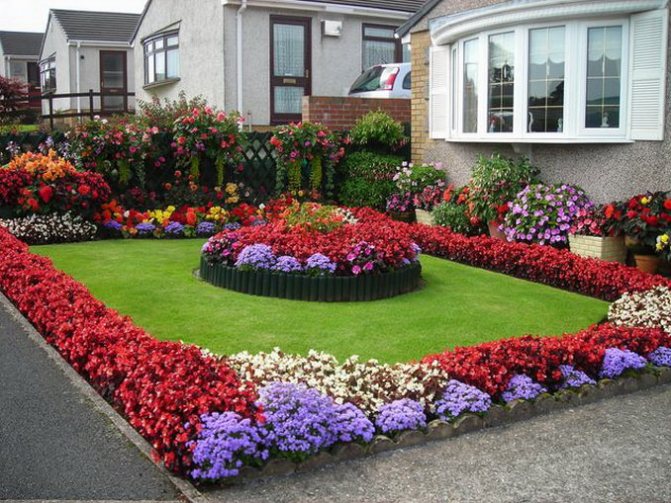

Bottles work too
Original and interesting design solutions can be realized if you try to use bottles as a flower bed (or rather, its fence). In this case, both plastic and glass are suitable.
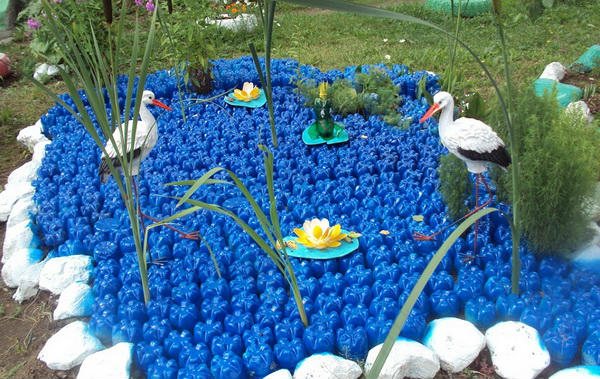

Flower beds from plastic bottles


Flowerbed in the country from plastic bottles photo
If you fill plastic bottles with sand (for weight) and stick around the perimeter of the flower bed, you get a very strong fence that is not afraid of any weather conditions. At the same time, the bottles, if they are colored, do not need to be painted. But if desired, an original ornament may well appear on their surface.
And bottles can themselves become flower beds. For example, if you take large enough containers, cut holes in them and paint them properly, you get original pigs.


Flower beds
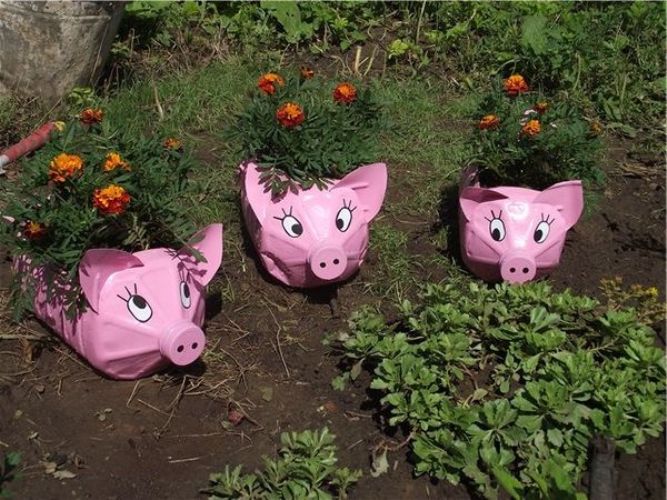

How to make a flowerbed pig out of a plastic bottle
You can also form a flower bed from glass bottles. If you lay them out in rows in a circle on some base (for example, a barrel), fixing the necks in a cement mortar, you get a very pretty tall flower garden.
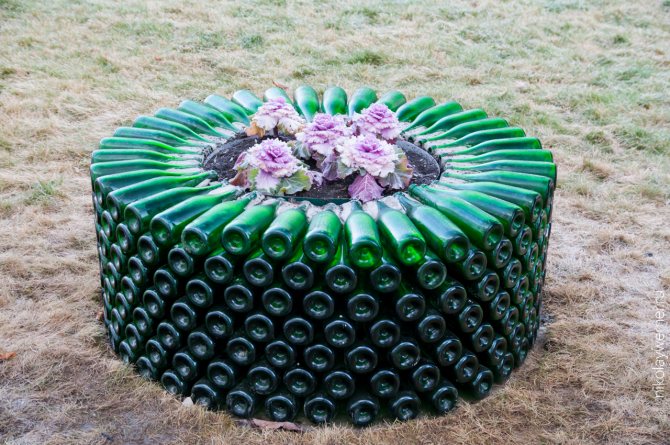

Flower bed made of glass bottles
Flower bed design schemes
By choosing different plants, combining them, you can create an almost endless number of variations of a simple but very effective flower bed. But if you are new to this business, then it will be easier to use ready-made options and simple schemes for creating flower beds.
- Central flower bed - this scheme is the simplest one for organizing a flower garden. It consists of circles. The center is filled with cannes with dark leaves, which are the soloists of the whole composition, then green-leaved cannes are planted in a circle, the third row is decorative leaf gnafalium and this parade ends with snapdragons.
- Vienna flower. To create such an option, it will require organizing a six-leafed flower on the flowerbed, the center of which will be white levkoi, the border for which will be Alpine forget-me-nots. The outer edge is well organized with islands of viola, zinnia, primrose.
- A fancy pattern is a round flower bed, which is decorated with a large number of undulating elements, decorated with variegated, sun-loving perennials. In the center of such a flower bed, you can place a squat chamerops with a beautiful crown of fan leaves. Its shadow will be a good background for dahlia zinnia, and coleus will act as a contrast. Fancy curls can be created with begonia and pelargonium, which will look very impressive against the backdrop of lawn grass.
The proposed schemes are just a few of the many options. Or maybe you already have your own creative ideas for decorating a beautiful flower bed - an amazing decoration for your site?
Pros and cons of flower beds in the country from scrap materials
A do-it-yourself flower garden from improvised means is a good solution for a site of any size. In addition, you can also name a number of other advantages that distinguish this kind of decorative element favorably:
- originality, which allows you to make the site unique;
- profitability, since in most cases, for this purpose, they use those things that are unsuitable for their intended purpose;
- aesthetics, because you can make something beautiful and very attractive out of ordinary things, which will certainly surprise guests, demonstrating the creative abilities of the owner.
There are practically no drawbacks to this method of decorating landscape design, with the exception of the time and effort spent on recreating your ideas. A possible lack of imagination can also be attributed to the disadvantages, but today this is no longer such a vast problem. After all, there are already ready-made ideas for decorating flower beds with improvised materials.
What improvised means can be used to make a flower bed
The possibilities for creating original flower beds with your own hands from scrap materials are almost endless. For this purpose, a variety of household items, furniture and even unnecessary things or so-called trash can be suitable.
Suitable household items:
- old dishes (kettle, saucepan, cups);
- basins and buckets;
- chest or suitcase;
- umbrella.


You can often see do-it-yourself flower beds from such improvised items as:
- chairs;
- tables;
- pedestals;
- beds.


As for unnecessary things, in this case, the list is quite extensive. You can use:
- old shoes;
- glass or plastic bottles;
- remnants of building material;
- old tires;
- iron containers and barrels;
- broken bike;
- old boat.
DIY flower bed ideas from scrap materials
There are also many ideas for the design of such a decorative element for the landscape, as well as all kinds of materials. The simplest flower beds that you can make with your own hands from scrap materials are car tires. At the same time, a single flowerbed, multi-tiered and cut-out can be made from old tires.
A single flower bed is the simplest, where it is enough just to thoroughly clean the tire and paint it in the desired color or apply a pattern.
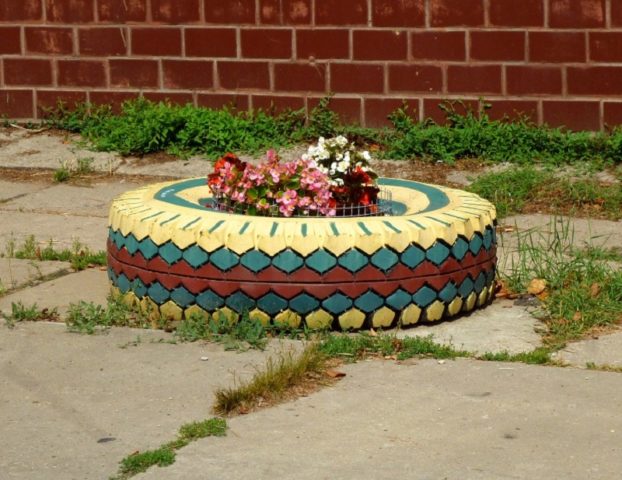

As a multi-tiered, you can lay out a flower bed from the tires in the form of a pyramid or an original fence.


Since the tires are made of rubber, which is an easy-to-cut material, it will not be difficult to create carved flower beds from them. In this case, you can make an original vase, mug, flower, swan and much more.
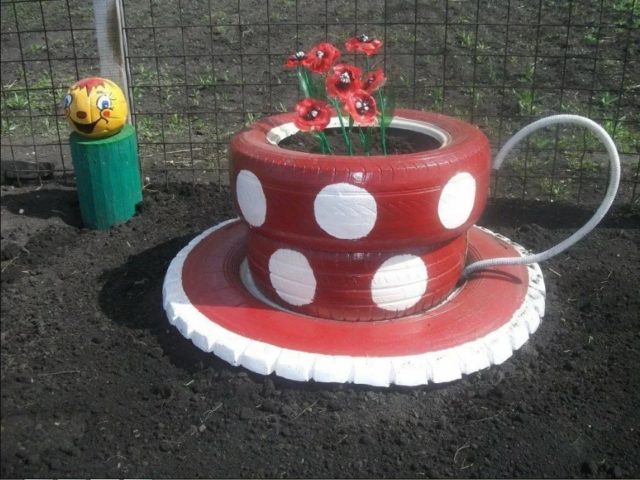

From some of the materials at hand, you can create a beautiful and very original flower bed fence. For these purposes, plastic or glass bottles are suitable. Remains of building material, for example, bricks, trims of beams, boards. Or you can even use simple stones.
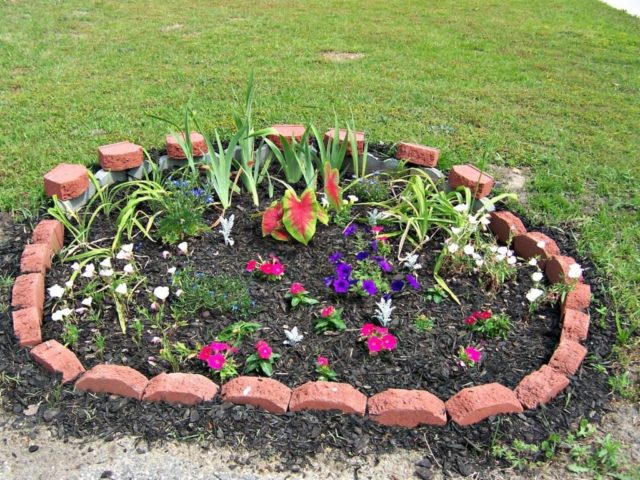

You can add an old kettle, can, bucket to the list of cool flower beds from scrap materials. Even a ceramic pot, as if sunk into the ground, from which a stream flows, made of beautiful bright flowers.
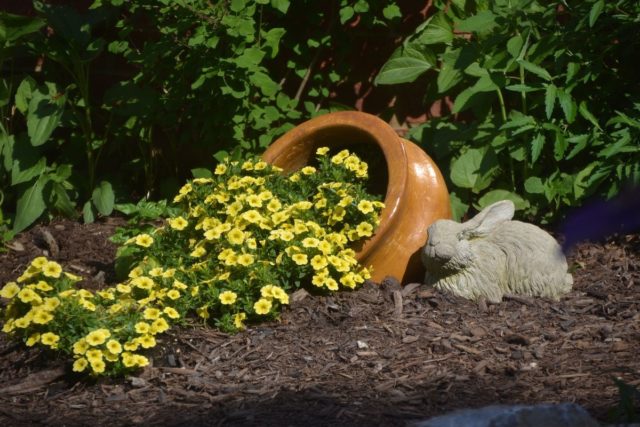

Do-it-yourself decorative flower beds from such an improvised material as wood are quite good. In this case, old stumps and rather large logs are suitable. A recess is made in them, which is covered with fertile soil, and then garden plants are planted.
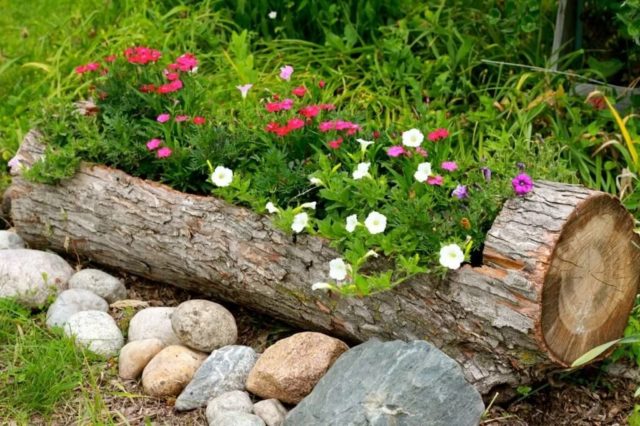

To create beautiful flower beds with your own hands from scrap materials, absolutely all unnecessary things, pieces of furniture and even old transport will fit. Of course, if you approach the design with imagination.

